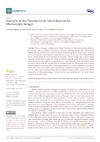Identificador persistente para citar o vincular este elemento:
https://accedacris.ulpgc.es/jspui/handle/10553/107176
| Title: | Analysis of the nosema cells identification for microscopic images | Authors: | Dghim, Soumaya Travieso-González, Carlos M. Burget, Radim |
UNESCO Clasification: | 220990 Tratamiento digital. Imágenes | Keywords: | Deep Learning Disease Detection Image Image Processing Machine Learning, et al |
Issue Date: | 2021 | Journal: | Sensors (Switzerland) | Abstract: | The use of image processing tools, machine learning, and deep learning approaches has become very useful and robust in recent years. This paper introduces the detection of the Nosema disease, which is considered to be one of the most economically significant diseases today. This work shows a solution for recognizing and identifying Nosema cells between the other existing objects in the microscopic image. Two main strategies are examined. The first strategy uses image processing tools to extract the most valuable information and features from the dataset of microscopic images. Then, machine learning methods are applied, such as a neural network (ANN) and support vector machine (SVM) for detecting and classifying the Nosema disease cells. The second strategy explores deep learning and transfers learning. Several approaches were examined, including a convolutional neural network (CNN) classifier and several methods of transfer learning (AlexNet, VGG-16 and VGG-19), which were fine-tuned and applied to the object sub-images in order to identify the Nosema images from the other object images. The best accuracy was reached by the VGG-16 pre-trained neural network with 96.25%. | URI: | https://accedacris.ulpgc.es/handle/10553/107176 | ISSN: | 1424-8220 | DOI: | 10.3390/s21093068 | Source: | Sensors [ISSN 1424-8220], v. 21 (9), 3068, (Mayo 2021) |
| Appears in Collections: | Artículos |
SCOPUSTM
Citations
6
checked on Jun 8, 2025
WEB OF SCIENCETM
Citations
4
checked on Jun 8, 2025
Page view(s)
146
checked on Jun 15, 2024
Download(s)
94
checked on Jun 15, 2024
Google ScholarTM
Check
Altmetric
Share
Export metadata
Items in accedaCRIS are protected by copyright, with all rights reserved, unless otherwise indicated.
